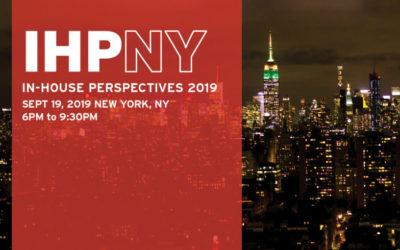“You are not alone.” That was the clear message that resonated with leaders of in-house creative services who came together to participate in the InSource Regional Roundtable on June 20, 2012, as part of their HOW Design Live 2012 Conference experience in Boston, Massachusetts. Facilitated by InSource President Andy Brenits, this opportunity to connect with peers and share insights on how to overcome career path challenges stimulated lively conversations focused on ways to promote best practices in the workplace.
InSource provides the following takeaway messages from this event so participants can consider applying various ideas in their workplace.
Advice and Inspiration for Leaders of In-House Creative Teams
• Create a mentorship program.
• Work/life balance really is important and requires thought and planning to achieve.
• Keep your boss informed, as well as document everything.
• Be aware that it’s powerful when someone explains something in a way that you can understand, creating the “Aha!” moment.
• Always have a right-hand person to help you out in an emergency. Assign someone on your staff to fill in for you when you are out at meetings or on vacation.
• Do what you love and the money will come.
• Coach your staff. Don’t do the work for them.
• Recognize that in-house design leaders are more often than not the brand manager.
• Be aware that skill sets are becoming more digital.
• In order to be successful, you must be willing to take risks.
• Be aware that people don’t quit their jobs; they quit their bosses.
• Grow your team organically by training your staff to develop new skill sets instead of hiring from outside, which can motivate existing staff because it allows a more robust career path for them.
• Train additional skills for staff retention.
• Offer gift cards for those who complete training courses for professional development.
• Inspire people to grow their skills to stay relevant in today’s market.
• Use a print production/pre-press checklist as a helpful tool for training staff as well as providing guidance to freelancers.
• Set up Lunch and Learn sessions to share knowledge across your team. Ask a staff member to present a new process or discuss a new software trick recently learned.
Areas of Advancement for the Manager
• Move to a project management role.
• Motivate and inspire others through key initiatives that managers must be able to implement with their staff.
• Write for blogs, write a book, write creative articles—writing can get your name out there and be a great networking device.
• “Be a thought leader.”
• Get involved in a creative organization.
How to Advance Your Staff to Further Your Own Career
• Move smaller, less complex projects down to your staff.
• Delegate project coordination to your staff, and back off from hands-on work.
• Encourage your staff to take on biggerpicture projects.
How to Advance Within Your Organization
• Keep learning—education and knowledge are keys to personal growth.
• Understand what social media means.
• Add value, understand your company and be a valuable business partner so you will not be seen as “just overhead.”
• Be a strategic thought leader, understand your stakeholders’ objectives and invent processes to move their business forward.
• Learn how to manage people you can’t see. You have to develop the skills for leading people through WebEx, conference calls and Skype.
• Improve your listening skills because you can’t always see body language or reactions on people’s faces.
• Improve your communication skills for making presentations and doing internal client networking.
• Become a business partner, and help build the business.
• Understand metrics and how to create them because metrics are powerful business tools that can help you manage your business.
• Design management degrees are available at some universities and are worthwhile.
• Understanding each individual’s strengths will help the manager assign projects and move initiatives forward, instead of trying to fit a round peg into a square hole.
• Empower your staff to take the initiative to learn and expand their skills. Have them own their projects and present their work to internal clients.
• Challenge your staff to be a part of the solution, not just the problem.
• Be able to present to the C-suite. Bring staff members with you who want to take on management duties.
• Always ask for help if you don’t know the answer—be inquisitive.
• Know your industry and firm.
• Understand budgeting; seek internal help if this is not a strong point.
Boston, MA, InHOWse Conference Words of Inspiration:
“Making the complicated simple is creativity.” • “Be strategic with any plan. You can win a case based on a solid plan—not because people love the creative.” • “Hire people who are better than you.” • “Design your career.” • “Know when to coach from the sideline.” • “People follow positive influences.” • “Always come through on your promises.” • “The grass isn’t always greener. Water your own grass.” • “Don’t use design terms when presenting; clients don’t know or care about PMS numbers.” • “Deliver presentations in a unique and compelling way.” • “Stop assisting and start enabling.” • “Don’t just talk about it, do it.” • “Input is key to successful output.” • “Success is not making the same mistake twice.” • “The entire team should be able to articulate our added value. Create a department elevator speech.” • “Define what’s next, and do it now.”
Special Thanks To Our Partners and Supporters: Brilliant Graphics, MICA Consulting Group, Mohawk and Neenah Paper for their generous donation of partnerships, materials and services to support the work of InSource!
InSource also greatly appreciates the assistance of the organizers of the HOW Design Live 2012 Conference for meeting space arrangements and promotion of this InSource event.





